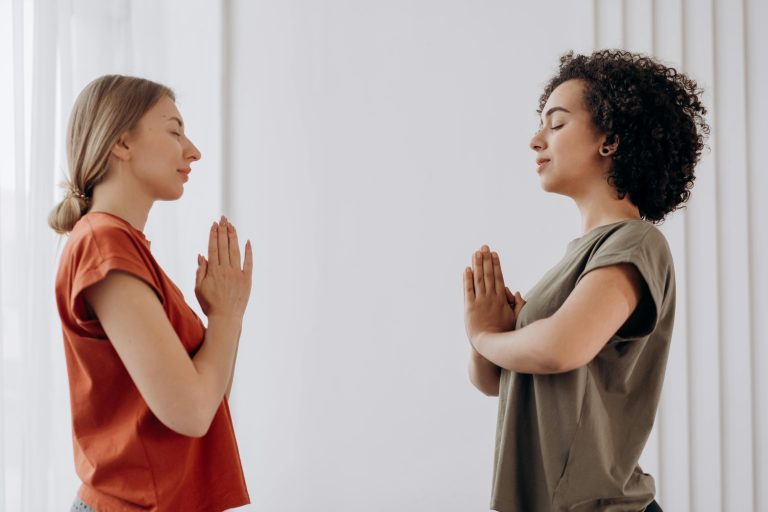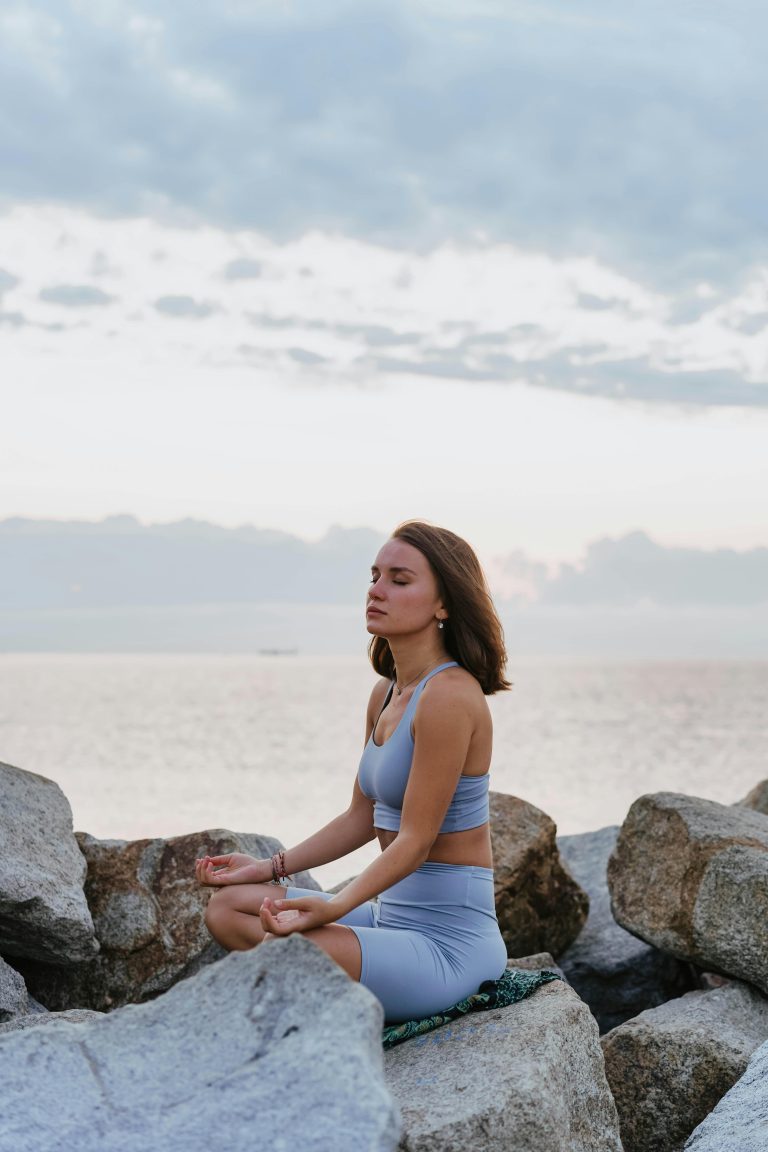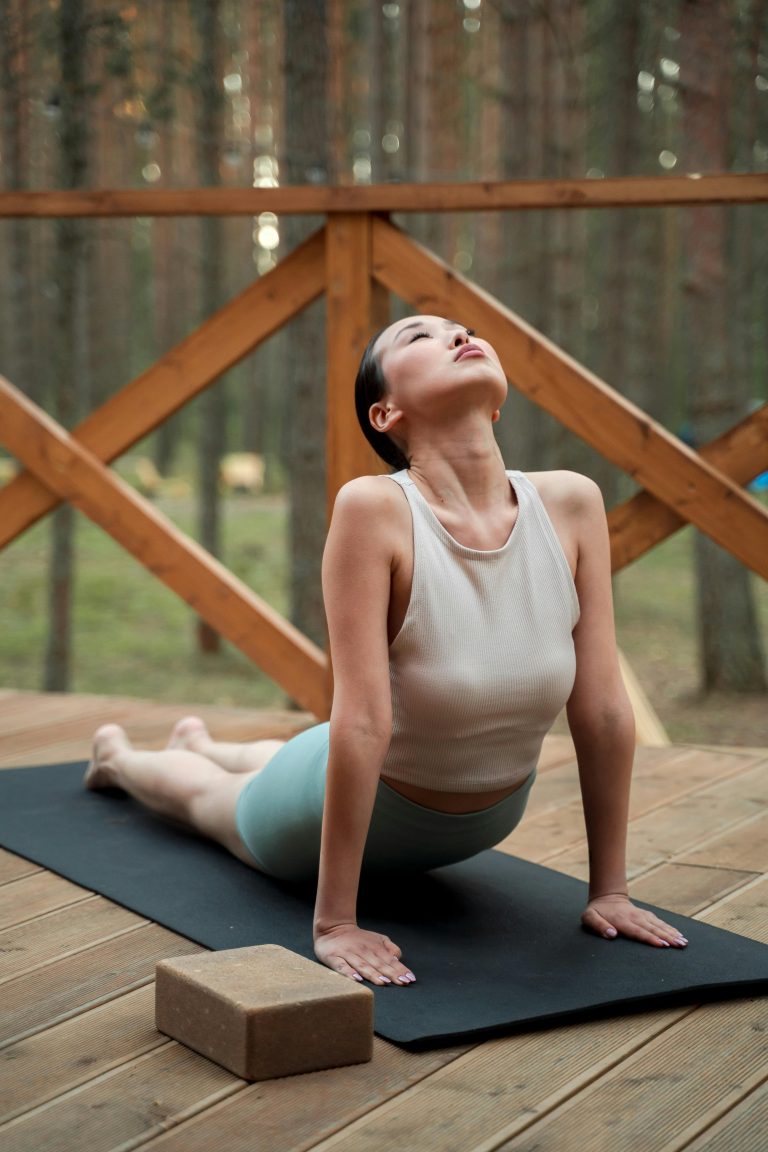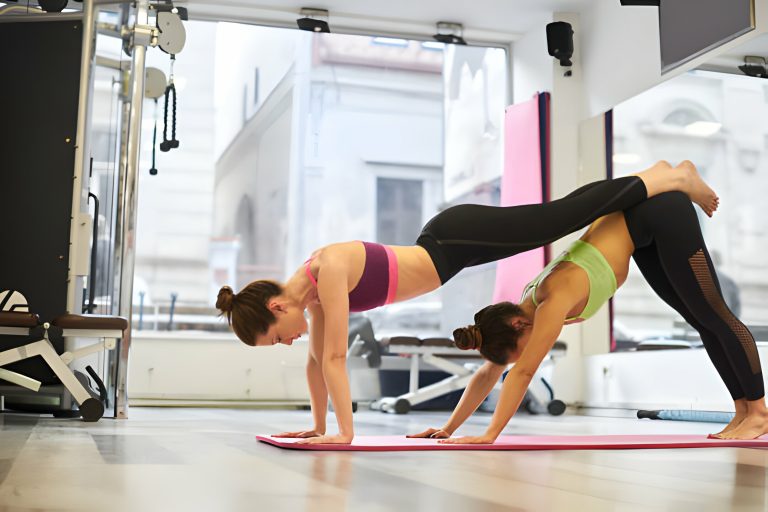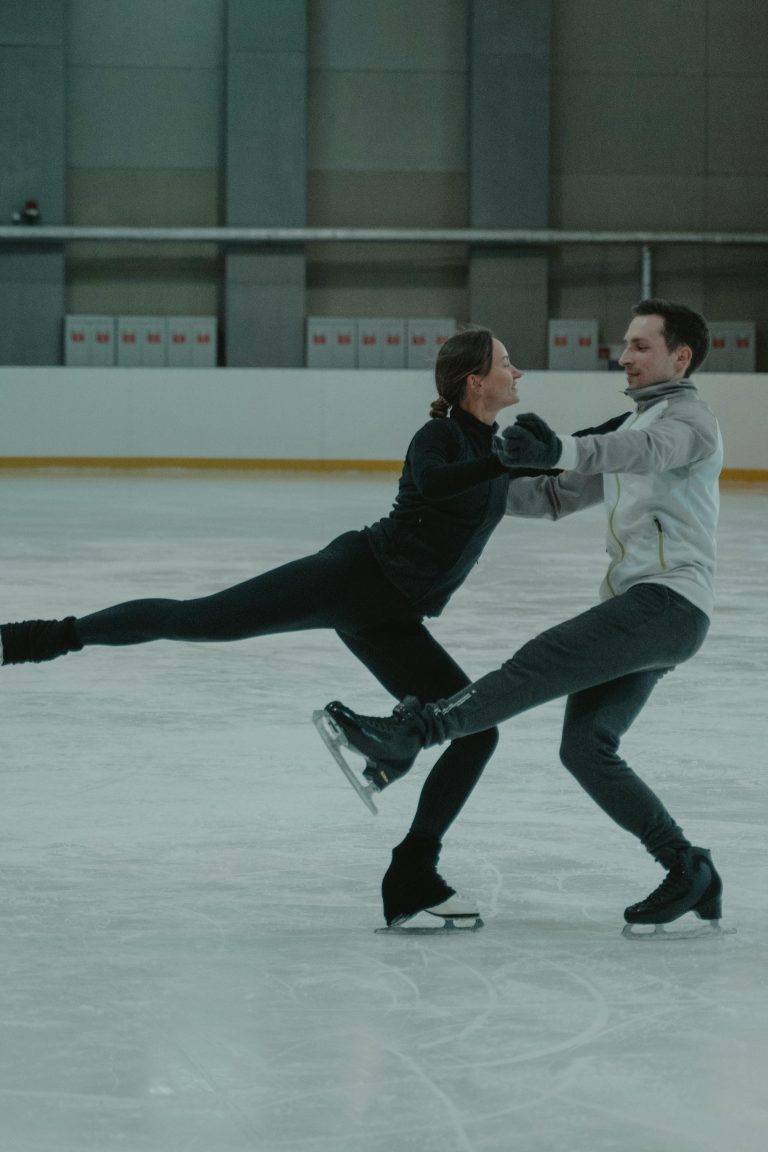Find Your Balance: Elevate Your Practice with Paddle Board Yoga
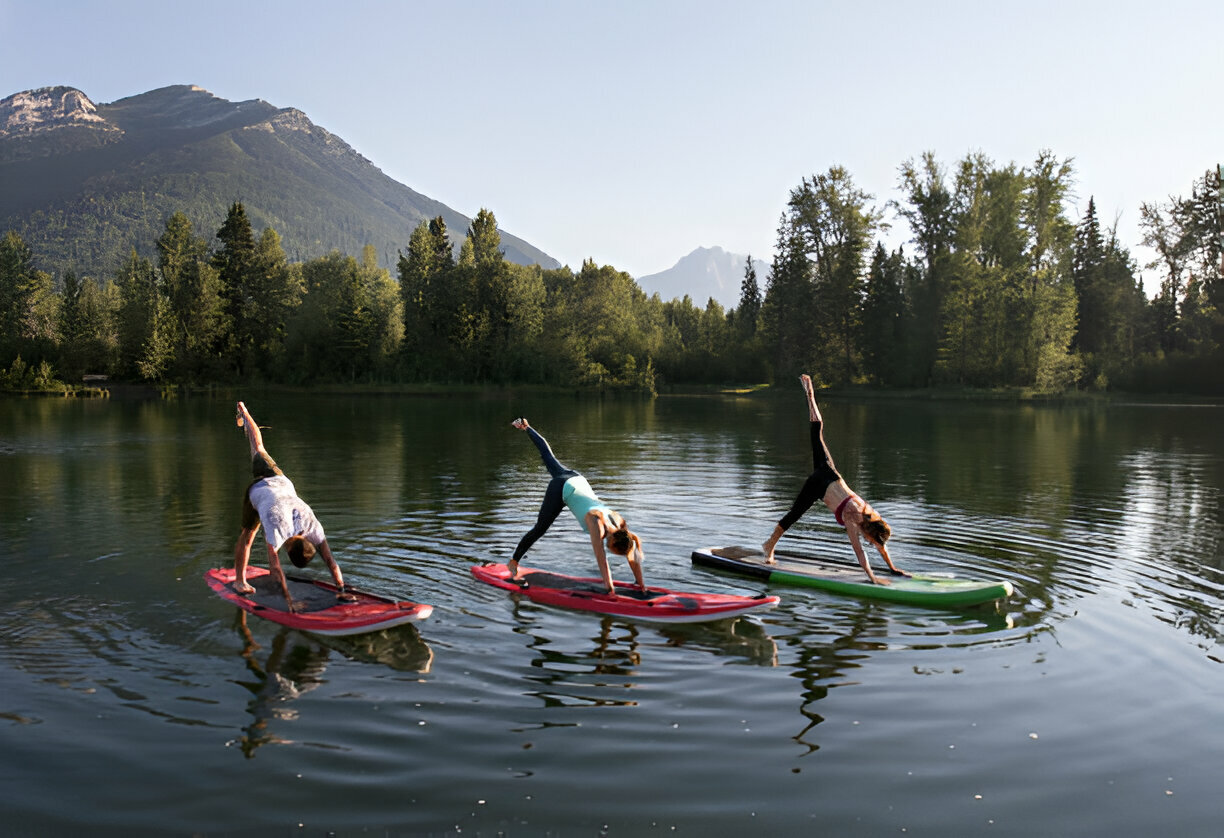
Paddle board yoga, or SUP (Stand Up Paddleboard) Yoga, is an innovative practice that combines the traditions of yoga with the dynamic nature of stand-up paddleboarding. Participants perform asanas (yoga poses) on paddle boards that gently float on water, incorporating the element of water as an added balance challenge. This fusion not only provides a full-body workout but promotes enhanced concentration and a serene connection with the natural surroundings.
The practice of Find Your Balance: Elevate Your Practice with Paddle Board Yoga brings with it a multitude of unique benefits. For one, the instability of the paddle board intensifies each yoga pose, engaging core muscles and improving strength. Water’s natural instability requires practitioners to heighten their focus and brings a new dimension to mindfulness in movement. Furthermore, the tranquil setting enhances the meditative aspects of yoga, allowing individuals to achieve deeper relaxation and stress reduction.
In continuing with the detailed look at Find Your Balance: Elevate Your Practice with Paddle Board Yoga, the next portion of the content will scrutinize the prerequisites for beginning this practice, including the selection of suitable equipment and the importance of a calm body of water. Safety precautions essential for avoiding unnecessary spills or potential hazards will be highlighted, assuring that the practice remains enjoyable and secure. Additionally, the forthcoming discussion will cover how to gracefully transition between poses on the unstable surface, which is a key component in preventing unwelcome plunges into the water.
The harmonious blend of balance, strength, and focus is not the sole hallmark of paddle board yoga; the modality also incorporates the allure of being on the water and the unparalleled views one can enjoy while engaging in their practice. It is indeed a picturesque way to enhance physical fitness and mental clarity, all while soaking in the natural beauty of the outdoors. With paddle board yoga, one’s fitness regimen transcends the confines of the traditional yoga studio, offering a novel and refreshing twist to an ancient discipline.
- Paddle board yoga combines the practice of yoga with the challenge of stand-up paddleboarding (SUP), providing a workout that enhances balance, strength, and focus.
- Engaging in yoga on a paddle board, which is an unstable surface, increases the intensity of the practice, especially demanding more from core muscles which have to work harder to maintain balance.
- Performing yoga on water also offers a serene and natural environment that can improve mental health, reduce stress, and heighten the meditative aspects of yoga.
- Paddle board yoga is suitable for all levels, from beginners to advanced practitioners, as instructors often offer modifications to accommodate different skill sets and comfort levels.
- Essential equipment for paddle board yoga includes a high-quality paddle board, a paddle, an anchor to keep the board stationary, and a personal flotation device for safety.
- It’s important to check the local weather and water conditions before embarking on a paddle board yoga session to ensure a safe and enjoyable experience.
- Participating in paddle board yoga classes led by certified instructors is recommended for beginners to learn the basic techniques and for safe practice.
- Aside from the physical benefits, paddle board yoga encourages a deeper connection with nature and promotes environmental awareness as practitioners engage with the water and wildlife.
- Due to its popularity, many resorts and coastal communities now offer paddle board yoga classes, making it an accessible activity for both locals and travelers seeking unique fitness experiences.
- Regularly practicing paddle board yoga can lead to improved overall fitness, including better cardiovascular health, agility, and a strong, toned physique.
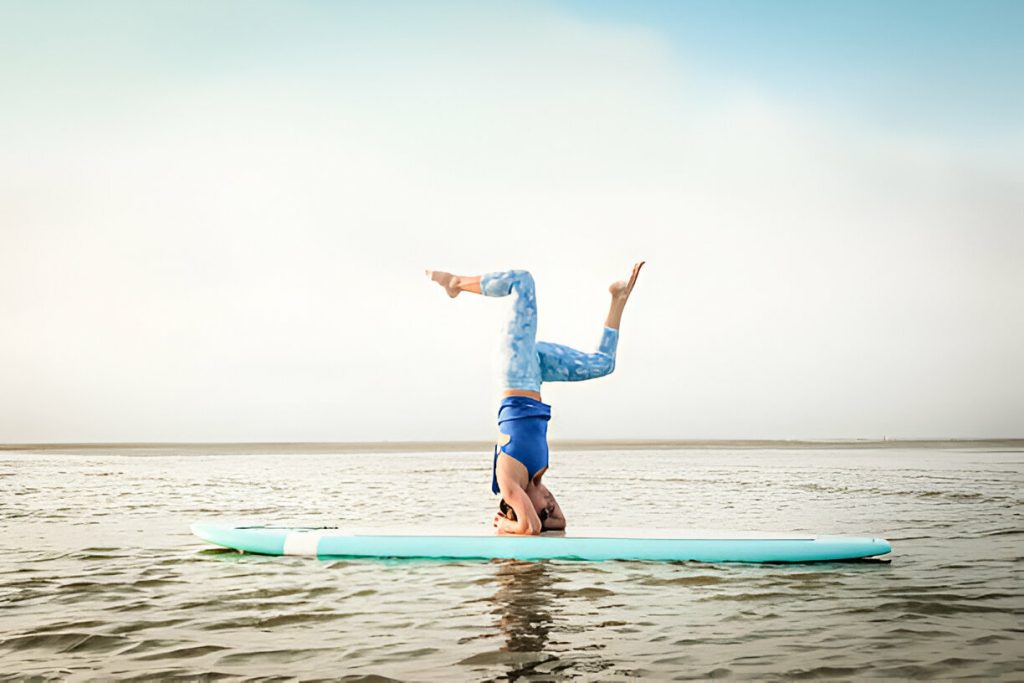
How Does Paddle Board Yoga Enhance Your Fitness Routine?
Paddle board yoga, or simply SUP yoga, is a form of exercise that merges the skill of stand-up paddleboarding with the practice of yoga. This fusion brings forth a challenging yet rejuvenating workout that engages the body and the mind. As practitioners perform asanas (yoga postures) on a paddleboard, they must constantly adjust their balance to maintain stability on the undulating water, thus enhancing core strength and concentration. Paddle board yoga elevates traditional yoga by introducing the element of water, which requires heightened focus and body awareness to execute the poses successfully.
Transforming a serene body of water into a floating yoga studio, paddle board yoga encourages individuals to connect with nature while performing their sun salutations. Originating in the serene waters of Hawaii, it has grown in popularity as both a form of fitness and a recreational activity. Engaging in paddle board yoga provides a unique environment that intensifies the yoga experience, demanding more from the practitioner’s sense of balance and core stability compared to yoga on solid ground. The constant motion of the water adds a dynamic element to the practice, which can lead to increased muscle engagement and improved proprioception. This aquatic twist to yoga creates a playful and exhilarating way to enhance one’s mental focus and physical agility.
Methods for Cultivating Mindfulness
Mindfulness practice is rooted in ancient traditions and has migrated into contemporary wellness routines worldwide. To cultivate mindfulness, one approach is engaging in seated meditation, where an individual finds a quiet space, assumes a comfortable posture, and focuses on their breath. The practitioner observes the flow of air in and out of their body, acknowledging wandering thoughts without judgment and gently guiding their attention back to their breathing. Another popular method is walking meditation – a practice where steps are taken slowly and deliberately, each footfall becoming the anchor for present-moment awareness. Practitioners often select a path in nature, allowing the senses to fully absorb the surrounding sights, sounds, and smells, thereby promoting a state of active mindfulness.
Enhancing Concentration through Brain Training Games
In a digital age where attention spans are constricted by constant stimuli, brain training games have become a favored tool for enhancing concentration and cognitive flexibility. These games, accessible through mobile apps or websites, offer a diverse array of challenges that adapt to an individual’s skill level. Puzzles such as Sudoku and crosswords demand focused thinking and pattern recognition, while memory match games require recalling the position of various symbols under time pressure. Some brain training programs are specifically designed by neuroscientists to target different aspects of cognitive function, ranging from processing speed to problem-solving abilities, all aiming to strengthen the neural pathways involved in attention and reasoning.
Physical Balance through Core-Strengthening Exercises
Achieving physical balance is crucial for both athletes and individuals pursuing general fitness. Core-strengthening exercises are central to this goal, as a strong core is the foundation for stability across various movements and activities. Planks are an exemplary workout that isolates and strengthens the entire core region. Starting in a push-up position, the exerciser holds their body in a straight line from head to heels, engaging the abdominal muscles to keep the torso rigid. Side planks add a dimension to this exercise by targeting oblique muscles, which are vital for lateral balance. Other core exercises include stability ball routines, where individuals perform movements like crunches or leg lifts on an unstable surface, forcing the core muscles to work harder to maintain equilibrium.
Nutrition Strategies for Energy Management
Maintaining consistent energy levels throughout the day can often be linked to an individual’s dietary choices. Balanced nutrition strategies are pivotal and involve consuming a variety of foods that release energy at a steady pace. Complex carbohydrates, such as whole grains, legumes, and vegetables, are known for their slow-releasing energy properties. Pairing them with high-quality proteins, like lean meats or plant-based alternatives, accentuates this effect by promoting satiety and preventing blood sugar spikes. Hydration is another cornerstone of energy management, as even mild dehydration can result in fatigue. Integrating healthy fats from sources such as avocados, nuts, and olive oil contributes to sustained energy because they digest slowly, providing a long-lasting fuel source for the body.
1. What is paddle board yoga?
Paddle board yoga is a form of yoga that is practiced on a stand-up paddleboard (SUP) on a body of water such as a lake, river, or the ocean. This type of yoga combines traditional yoga poses with the added challenge of maintaining balance on a floating surface. Practitioners often experience a deeper level of focus and heightened awareness due to the need to stabilize themselves on the water.
Engaging in paddle board yoga offers a unique opportunity to connect with nature while working out. It helps in improving balance, strength, and flexibility, adding a new dimension to one’s yoga practice. The peaceful and tranquil environment can also enhance meditation and relaxation during the practice.
2. Is paddle board yoga suitable for beginners?
Yes, paddle board yoga can be suitable for beginners, although it may present more of a challenge compared to traditional yoga on solid ground. Beginners are often encouraged to start with basic yoga poses and slowly work their way up as they become more comfortable with the movement of the board and their ability to balance on the water.
Most instructors provide an introductory lesson to paddle boarding before embarking on yoga poses to ensure everyone feels secure and prepared. Beginners are advised to have an open mind, be patient with their progress, and not to get discouraged if they find certain poses difficult at first or even fall into the water—it’s all part of the learning process!
3. How do I prepare for my first paddle board yoga class?
Before attending your first paddle board yoga class, it’s important to wear appropriate clothing, like a swimsuit or fast-drying athletic wear, and to apply waterproof sunscreen. You should also bring a towel, a change of clothes, and a water bottle. Some people might prefer to wear a personal flotation device for extra safety, especially if they are not strong swimmers.
It’s also beneficial to have some yoga experience to be familiar with basic yoga poses and breathing techniques. However, most importantly, come with an open mind and the willingness to try something new. Instructors will provide the necessary equipment and give you tips on how to get the most out of your experience.
4. Can paddle board yoga help improve my balance?
Definitely, one of the primary benefits of paddle board yoga is the improvement of balance. The instability of the paddleboard on water requires you to engage your core muscles and focus intently on maintaining your center of gravity with each yoga pose. This helps in developing better proprioception, which is the awareness of the body’s position and movement in space.
Over time, as you continue to practice paddle board yoga, you will likely notice that your overall balance during day-to-day activities improves as well. It’s also a fun way to build core strength, which is critical for balance and stability, in a dynamic environment that constantly challenges your body in new ways.
5. What are the best conditions for practicing paddle board yoga?
The ideal conditions for practicing paddle board yoga include calm and flat water with minimal wind and waves. These conditions will help reduce the board’s movement, making it easier to maintain balance and focus on the yoga poses. Beginners, in particular, will find these conditions more favorable as they adapt to the new experience.
It is also recommended to check the weather forecast before heading out for a paddle board yoga session. Early morning or late afternoon are often the best times of day as the wind is typically lower and the water is calmer. Ultimately, it’s about finding a time and place where you feel most at ease to enjoy your practice fully.
6. What safety measures should I take during paddle board yoga?
Safety is paramount in any water activity, including paddle board yoga. It is advised to always use a leash to attach yourself to your board, which serves as your personal floatation device if you fall into the water. Additionally, be aware of your surroundings and the local marine life, keeping a safe distance from boats, swimmers, and wildlife.
Paddle board yoga should always be done in a safe and supervised area, preferably with a certified instructor present. Beginners especially should avoid venturing into deep water or practicing in strong currents. It is also essential to know your limits and listen to your body to avoid injuries and overexertion.
7. Do I need special equipment for paddle board yoga?
Yes, specific equipment is needed to practice paddle board yoga which includes a stand-up paddleboard that is wide and stable enough for yoga poses, a paddle, and potentially a personal flotation device. Most paddle board yoga classes will provide this equipment, but if practicing independently, these items will need to be procured. Some may also choose to use a yoga mat on top of the board for extra grip, although it isn’t always necessary.
Ensure that your paddle board has enough buoyancy to support your weight along with the necessary stability to perform yoga poses safely. A high-quality, non-slip surface is also crucial for maintaining poses without slipping, especially when the board becomes wet.
8. Will I get a good workout from paddle board yoga?
Absolutely, paddle board yoga is not only calming and meditative but can also be a rigorous workout. The act of balancing on a floating board engages multiple muscle groups, particularly the core, which has to work overtime to stabilize the body. Additionally, the upper body and legs are engaged while transitioning between poses, maintaining them, and paddling.
Furthermore, because balance is more challenging on a moving surface, the muscles work even harder than they would in a traditional yoga practice on land. Therefore, you are likely to experience an increase in strength and endurance over time, as well as better muscle tone and definition.
9. Can I practice paddle board yoga if I am not a strong swimmer?
While being a strong swimmer is advantageous when engaging in any water sport, it isn’t a strict requirement for paddle board yoga, provided certain precautions are taken. Wearing a personal flotation device is essential for those who are not confident swimmers, and practicing close to the shore in shallow water where you can easily touch the bottom is advisable.
It’s also critical to never practice alone and to ensure that an instructor or experienced participant is present who can offer assistance if needed. Remaining aware of your comfort level and sticking within a safety zone will make your paddle board yoga experience enjoyable and free from undue stress.
10. How does paddle board yoga benefit mental health?
Paddle board yoga can have profound benefits on mental health. The practice encourages mindfulness and requires complete focus on the present moment, which can help to reduce stress and anxiety. It also allows you to practice yoga in a serene and beautiful natural setting, which can be incredibly peaceful and restorative for the mind.
In addition, the challenge of maintaining balance on a moving board means there is little room for the mind to wander or dwell on worries, thus fostering a state of mental clarity and calmness. The successful completion of a session often brings a sense of accomplishment and confidence, positively impacting overall mental well-being.
Final Thoughts
Paddle board yoga emerges as a unique practice that infuses tranquility and challenge into your regular yoga routine. By engaging core muscles for stability on the paddle board, participants gain enhanced balance and focus, both physically and mentally. The dynamic aspect of the water environment in paddle board yoga introduces a playful yet profound element to the exercise, fostering a deeper connection with nature while amplifying the benefits of traditional yoga poses. Participants should begin with basic postures to build confidence before progressing to more complex asanas. Safety is paramount; hence, always practice in calm waters and consider group sessions with an experienced instructor when starting. Paddle board yoga is transformative, as it not only elevates your practice through an increased demand for balance and concentration but also imbues sessions with a sense of peace and mindfulness that comes from being surrounded by water. Whether you’re a seasoned yogi or a beginner, integrating paddle board yoga into your routine might be the ideal step for invigorating your practice and finding your center amidst the ebb and flow of life’s currents.

